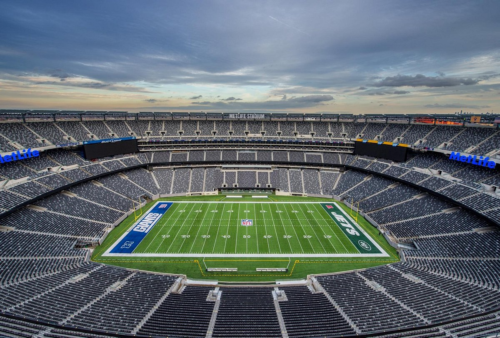Last year, when playing golf on a Fall Sunday morning with some friends (who are all recreational sports bettors), one of them pulled out his phone and started throwing in a few NFL bets. I asked him what he liked for this week’s games. He said “I usually just fade the public.” Here’s the thing – he is the public. So what happens when the public “fades the public?” Some sort of interstellar level black hole collapse? Has the universe (or Vegas) even accounted for this situation? Yes, in fact, it’s way more common than you think.
Read on for my 2023 updated guide to how to profitably fade the public and avoid being just another losing public bettor on the weekend.
1. Fading the Public is Now… Public Knowledge
While there are absolutely grains of truth in this tactic, no strategy has been run into the ground and buried more than the “fade the public” strategy during the last five years. It’s hard to tune into any piece of betting content without hearing some sort of “the public in on x team” in the first five minutes of a podcast or show.
Ironically, the strategy of fading the public has become somewhat public itself. A quick search online will yield countless articles, podcasts, and videos touting this approach. This saturation means that the “public” – the vast majority of bettors – is also well aware of this strategy. So, when a significant portion of bettors consciously choose to fade the public because they’ve read about it, what do we do?
My main issue with this strategy is that it tries to force a square peg into a round hole over and over again. Not every game needs to be looked at through the eyes of “public vs sharps.” Often times there is a mix of action from all sorts of bettors on all sorts of different spread and total prices.
You can’t make money in 2023 blindly betting the side that your favorite content creator touts as the “non-public” side.
More from EasyEdge:
Try Oddsjam on a risk-free 7-day trial to expand your betting capabilities
★ ★ ★ ★ ☆
4.4 from 1,400+ reviews
2. The Betting Splits Don’t Mean Much – Don’t Over-Analyze Them
The favorite sidekick of the “fade the public” strategy is the “reverse line movement” strategy. Basically, someone sees that a large percent (70% or so) of the “tickets” are on one side, but the line is moving the other way! This must mean that the dumb public is stuck and a ravenous syndicate of sharks are sure that the other side is a lock, right?
Well, this may be true in some cases, but it’s irrelevant given that the line has already moved. Lines move all the time for a variety of reasons, injuries, individual book exposure, coach press conferences, etc. The one constant is that if you’re betting after the line has already moved, you’re unfortunately late to the party. Unless the line is still actively moving (which you could observe on an odds screen like OddsJam’s), you are getting a worse number than any “sharp” who bet it at a better number. Over time, these numbers add up, and can turn you from a winning bettor to a losing one.
These “tickets vs money” betting splits are generally pulled from small sportsbooks and contain very incomplete information. Just because 70% of the 300 bets at Joe’s offshore book were on the Ravens does not necessarily mean this is the “public” side.
Below, we see the Action Network telling me that Vanderbilt is getting 66% of the bets, but DraftKings reports 84% of the bets on Wake Forest! These numbers are drawn from small samples at individual books, and from this example you can clearly see any single data point can’t be trusted.


Don’t chase the reverse line movement. If you predicted it and got ahead of it, great! But chasing the steam is a long-term losing strategy.
3. Don’t Assume the Heavy Favorite is Always the Public’s Choice
Most pieces of gambling content will tell you that the public loves the favorites and the name brand teams. It’s easy to fall into this common trap of thinking, especially when people are telling you this left and right. Unfortunately, most pieces of gambling content are lazy.
When you look at the board and see Alabama -45 versus Georgia State, it’s tempting for your brain to start screaming “I bet the dumb public is on the favorite, Alabama. Hah! I’m going to take the smart, sharp play in Georgia State plus the points.” You might even have glanced at one set of betting splits that tell you more tickets are on Alabama to reinforce your bias.
Unfortunately, without more context in the game, your brain is deceiving you. Sure, the public can sometimes be on this side, but just as often people will think “45 points is a lot, I might take the underdog here.” In reality it doesn’t really matter, as all you’re doing without any other handicapping is flipping a coin on how many points Alabama’s backups will score in the 4th quarter. Unless you have material information or other trends that will help you analyze this game, it’s a losing proposition to look at it through the lens of “the public.”
4. Not Every Game is a Sharps vs. Squares Showdown
While the concept of “sharps” (experienced bettors) vs. “squares” (casual bettors) is popular, it’s an oversimplification to view every matchup in this binary way. Not every game on the slate will have a clear divide between where the professional money and public money is going. On your standard NFL Sunday, there might be only one or two games which have a very clear line between “sharp” and “public” money. Unfortunately, the internet will try and tell you that the majority of the games on the board are sharp vs square showdowns, and this just isn’t true.
You’d be better off trying to identify the one or two games per week where there is a very clear case to be made that one side is getting all the public attention from the media all week (see my NFL betting roadmap for Week 2 to gauge some of these “overreaction spots”). Then, for all the other games, forget about what people are saying the “public” side is.
5. Fading The Public is the Most Useful in Large, Stand-Alone Games or Markets
As we noted in our last section, it’s important to identify a real reason why a team might be getting a ton of undeserved praise or media attention. When might this happen, you ask?
Try the Super Bowl, the College Bowl games, and March Madness. These are spots that check two main boxes for a sharp vs squares showdown:
First, there is a ton of time and media attention devoted to these markets. The Super Bowl has a two week media fest. Bowl Games have a month of attention paid to them. March Madness has a full bracket reveal and a wall-to-wall week of content.
Second, there is a huge influx of casual bettors that only bet the sport during these games. The Super Bowl is some people’s only bet all year. The first weekend of games during March Madness might be the only College Basketball betting someone does all year.
When there’s a massively-hyped team (usually with a high-powered offense) facing an unheralded team in a huge game, bingo! We finally have the makings of a profitable “fade the public angle.”

Hopefully this helped, and happy fading the public! Just don’t do it blindly.
FAQs
What does fade the public mean?
When people say “fade the public” what they are recommending is a bet against a popular, heavily-bet team. The thought process is that the recreational sports bettor loses overall, so you want to bet on the other side.
Is it profitable to fade the public?
No, blindly fading the public in every game will not be a profitable betting strategy. Sports books are aware of which bettors are “public” and “sharp,” so they will usually not be moving the market on recreational action. In certain high-profile games, however, it can be profitable to fade a public line move.
What does fading mean in gambling?
A “fade” in gambling is to take the opposite side of a wager. So for example, “fading the public” would mean taking the opposite side of a publicly-bet team.











